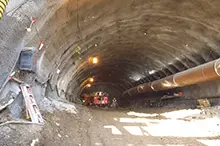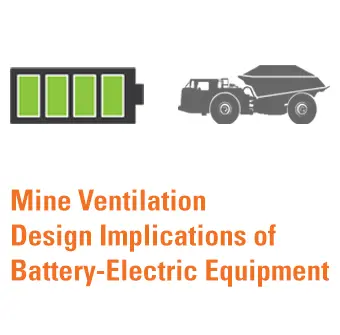As relatively hot mineral deposits are being developed to considerable depth, the issue of mitigating heat will require monumental cooling capacity in some cases. For deep deposits to be mined at increasing depths, mechanical cooling systems used to maintain an acceptable underground climate will most certainly become increasingly complex and expensive. In most methods, the main source of potential cooling energy comes from cold water. The cold water can come from ice (stowed or transported), in situ reservoirs, or refrigerated water chillers.
Air cooling power is available by passing intake airflow through stowed ice accumulated during favorable atmospheric conditions. Planning for sustainable cooling potential requires protected space to successfully maintain ice in storage until needed. Stored ice or cold water should be judiciously cared for, safely kept from the ill effects of heat, in order to remain useful for bulk air cooling. Maximizing the production of ice means that atmospheric conditions will be monitored closely during the formation phase. Storage facilities would maintain restricted airflow while minimizing possibilities for heat transfer during the storage phase. Successful installations will prioritize environmental management to favor long-timespan usage of sustainable cooling systems. Sustainable cooling systems could reduce or eliminate the need for mechanical cooling if installed with favorable conditions.


